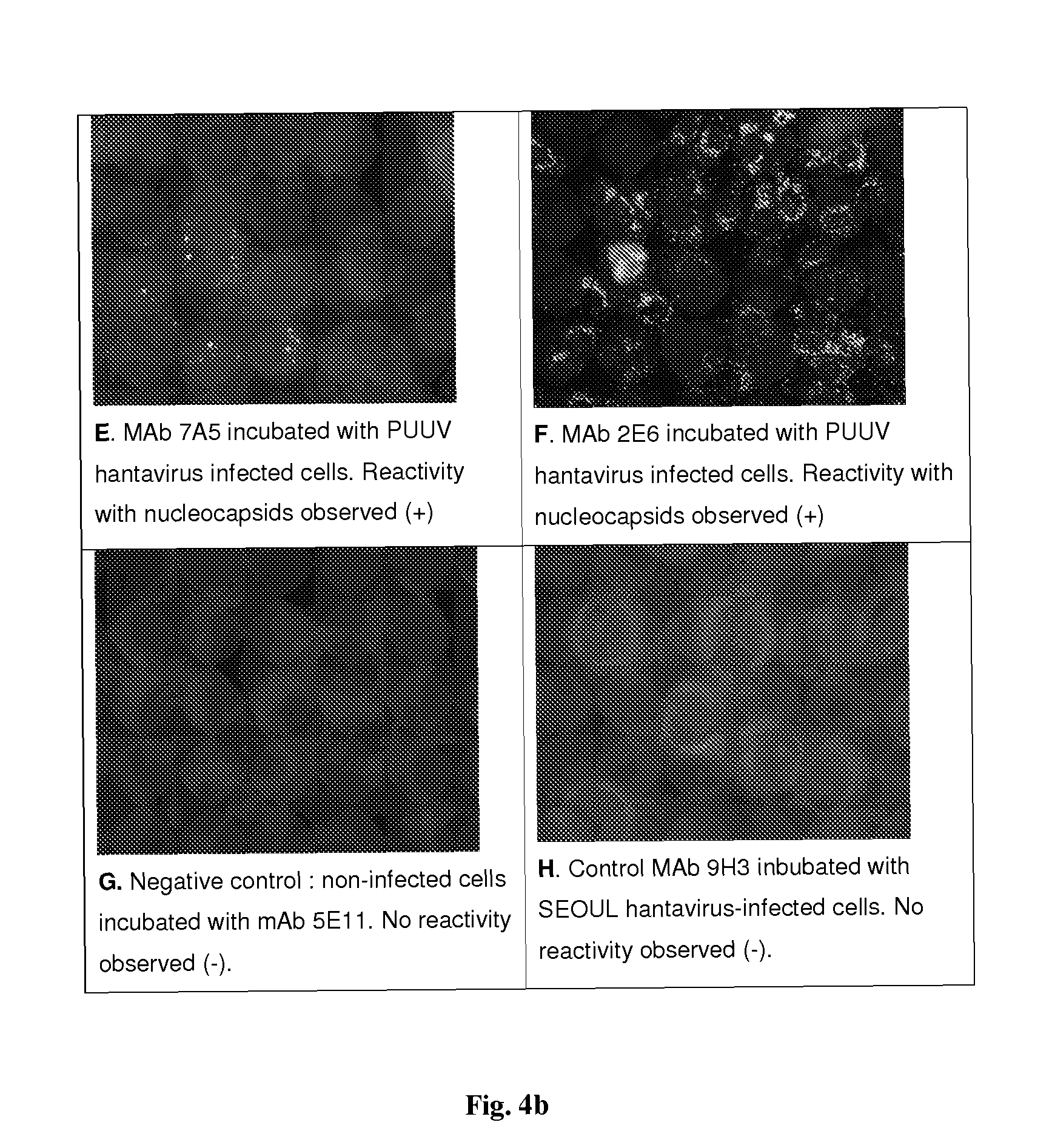Process for the production of monoclonal antibodies
a monoclonal antibody and monoclonal antibody technology, applied in the field of biotechnology, can solve the problems of difficult generation of hybridomas producing antibodies against peptides but not carriers, and not accessible to cells, and achieve the effect of efficient production of hybridomas
- Summary
- Abstract
- Description
- Claims
- Application Information
AI Technical Summary
Benefits of technology
Problems solved by technology
Method used
Image
Examples
example 1
[0099]The use of chimeric protein harbouring inserted Muc1 epitope to generate monoclonal antibodies against Muc1 epitope.
[0100]BALB / c mice were immunized with yeast-expressed purified recombinant chimeric protein: hamster polyoma virus major capsid protein VP1 (HaPyV-VP1) harbouring inserted Muc1 epitopes at positions 1 and 4 (VP1 / Muc). The expression in yeast and properties of HaPyV-VP1 (VP1) protein were described previously [Gedvilaitė A., Frommel C., Sasnauskas K., et al., Virology. 2000, v. 273, n. 1, p. 21-35]. Mice were immunized by injecting subcutaneously 50 μg of VP1 / Muc antigen mixed with complete Freund's adjuvant. Four weeks later mice were boosted in a similar way with 50 μg of VP1 / Muc antigen in incomplete Freund's adjuvant. Four weeks later mice were boosted again with 50 μg of VP1 / Muc antigen without an adjuvant. During immunization, the titers of antibodies specific to Muc1 epitope were tested by an enzyme-linked immunosorbent assay (ELISA). On day 3 after the las...
example 2
[0107]Determination of the specificity and isotypes of monoclonal antibodies raised against Muc1 epitope.
[0108]The specificity of antibodies produced by clones 12B2 and 14G2 was determined by ELISA and Western blotting. Immunoglobulin isotypes were determined by ELISA using antibody isotyping kit [Sigma, JAV].
[0109]It was determined by using these assays that monoclonal antibodies are of IgG isotype, IgG1 subtype and recognize both chimeric protein VP1 / Muc and synthetic Muc1 peptide but do not react with VP1 (carrier protein). This suggests that they are specific to Muc1 epitope. The results are presented in Table 1 and FIG. 1.
[0110]The data on the specificity and isotypes of MAbs produced by hybridomas 12B2 and 14G2 are presented in Table 1.
[0111]
TABLE 1Reactivity with:SubtypeSyntheticHybridoma clone(subclass)HaPyV-VP1VP1 / Mucpeptide Muc112B2IgG1−++14G2IgG1−++
[0112]FIG. 1 shows Western blotting picture where recombinant proteins VP1 and VP1 / Muc were immunostained with MAbs produced ...
example 3
[0119]The use of chimeric protein harbouring an inserted fragment of hantavirus nucleocapsid protein to generate monoclonal antibodies against hantavirus nucleocapsid protein.
[0120]BALB / c mice were immunized with yeast-expressed recombinant chimeric proteins: HaPyV-VP1, harbouring inserted 120 amino acid-long fragment of Vranica hantavirus nucleocapsid protein at either position 1 or 4 (VP1 / VR120). The expression of these proteins in yeast and their properties were described previously [A. Gedvilaite, A. Zvirbliene, J. Staniulis et al, Viral Immunol. 2004, 17(1):51-68].
[0121]Mice BALB / c were immunized 3 times and then the hybridization was performed. All procedures were performed in a similar way as described in Example 1 with the only difference that VP1 / VR120 protein was used instead of VP1 / Muc protein. During immunization, the titers (levels) of specific antibodies in the sera of immunized mice were tested, e.g., the development of IgG antibodies against the inserted fragment of ...
PUM
| Property | Measurement | Unit |
|---|---|---|
| molecular weight | aaaaa | aaaaa |
| chemical | aaaaa | aaaaa |
| length | aaaaa | aaaaa |
Abstract
Description
Claims
Application Information
 Login to View More
Login to View More - R&D
- Intellectual Property
- Life Sciences
- Materials
- Tech Scout
- Unparalleled Data Quality
- Higher Quality Content
- 60% Fewer Hallucinations
Browse by: Latest US Patents, China's latest patents, Technical Efficacy Thesaurus, Application Domain, Technology Topic, Popular Technical Reports.
© 2025 PatSnap. All rights reserved.Legal|Privacy policy|Modern Slavery Act Transparency Statement|Sitemap|About US| Contact US: help@patsnap.com



